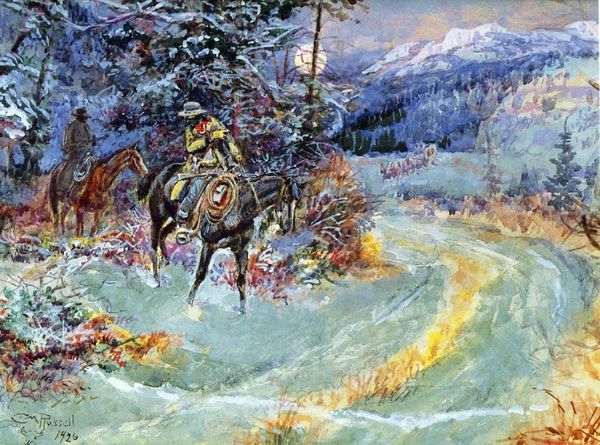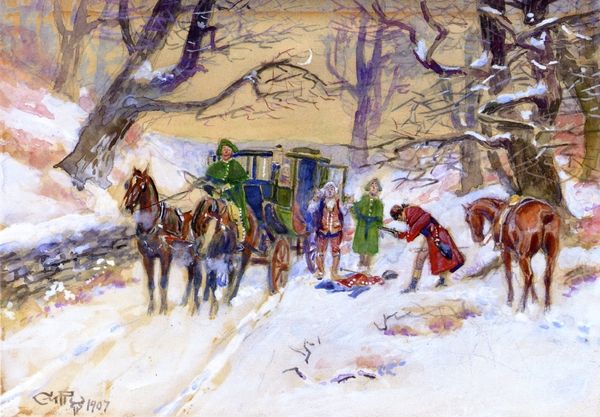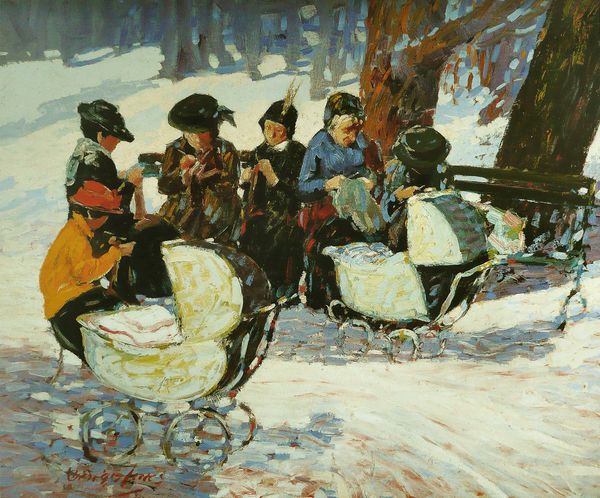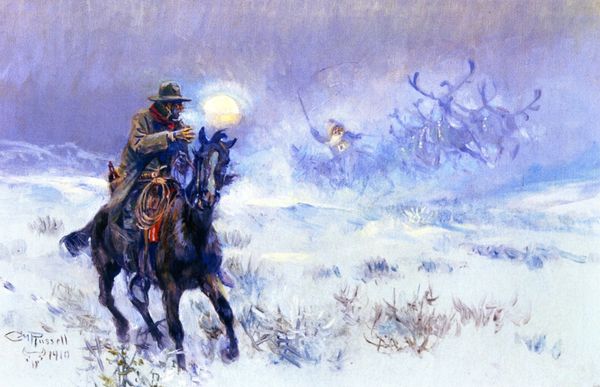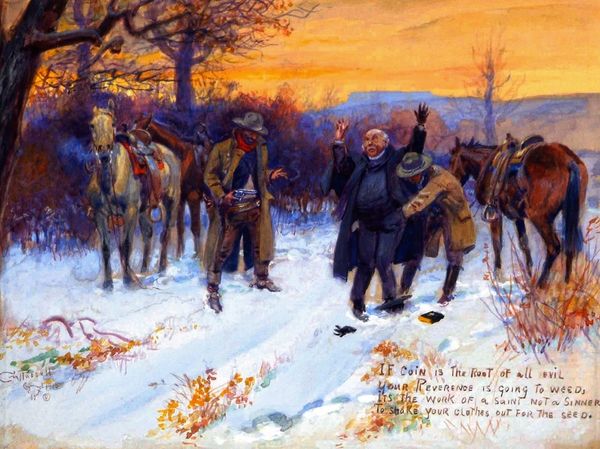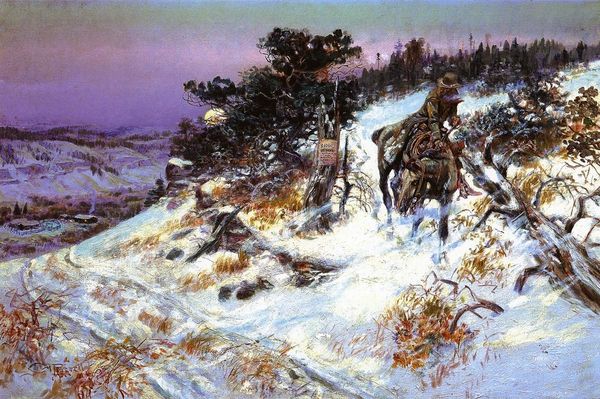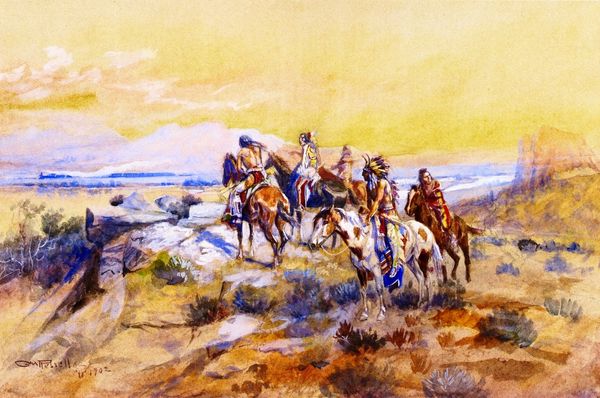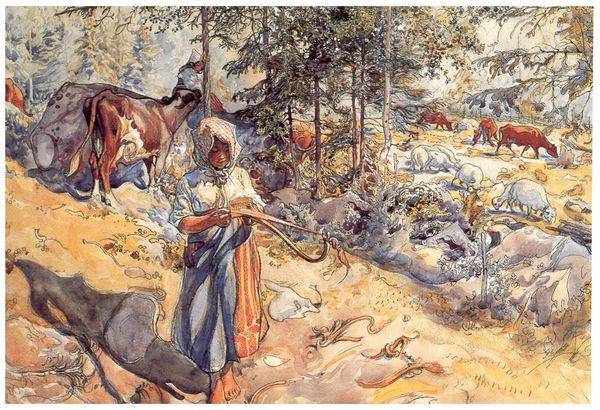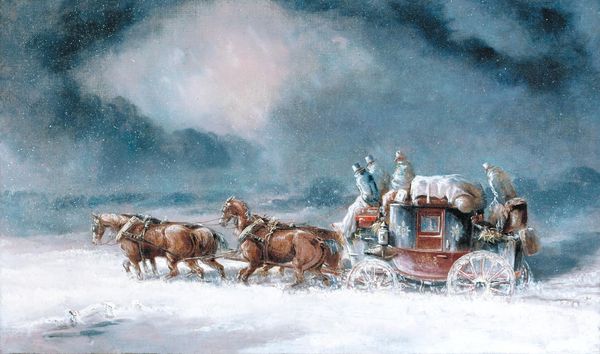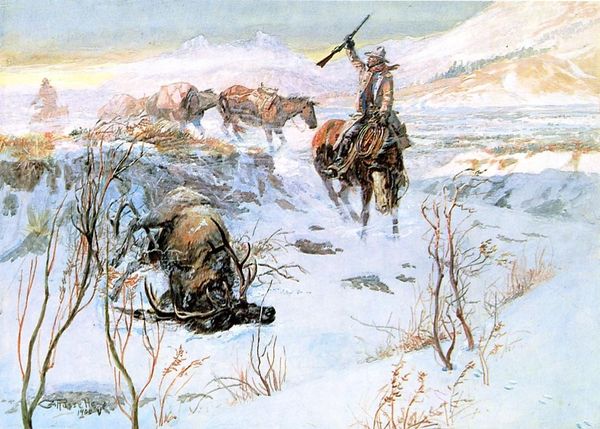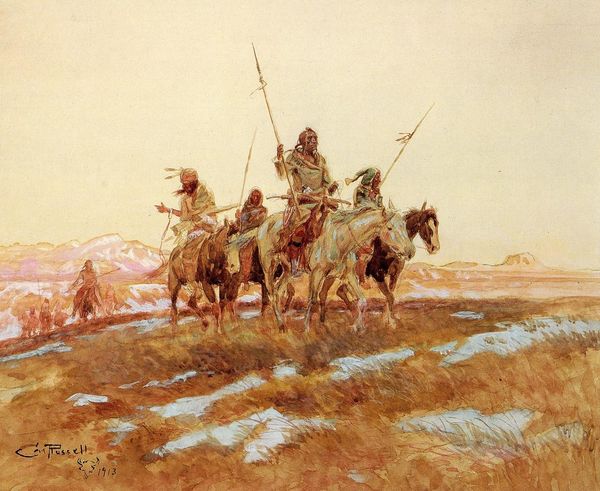
Copyright: Public domain
Charles M. Russell painted “Fool and the Knight” in watercolor, and it looks like he was having a lot of fun doing it. There’s a real sense of looseness in the way he’s applied the paint, letting the colors bleed and mingle, like he’s not too worried about staying inside the lines. The watercolor here is super interesting because of the way it plays with light and shadow. Look at the snowy ground and the way the light seems to bounce off it, creating this almost ethereal glow. Then there's the knight's armor, which seems to be reflecting different colors from the surrounding environment, binding him to the natural world in a surprising way. The textures are just amazing, particularly the way the paint is layered to create depth in the forest and in the figures themselves. Check out the fool's donkey and the way the individual strands of hair are rendered. It's almost as if Russell is winking at us, reminding us not to take ourselves too seriously. For me, there's something here that makes me think about Arthur Rackham's book illustrations. Like Rackham, Russell isn't afraid to mix fantasy with a touch of humour. It’s like they're saying, "Hey, life's a bit of a fairy tale, so let's enjoy the ride.”
Comments
No comments
Be the first to comment and join the conversation on the ultimate creative platform.
